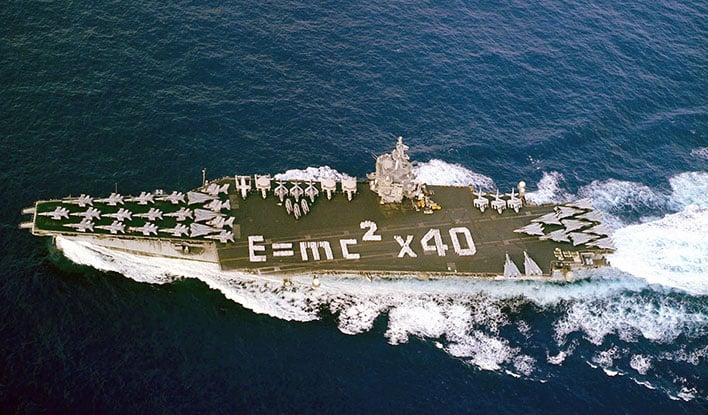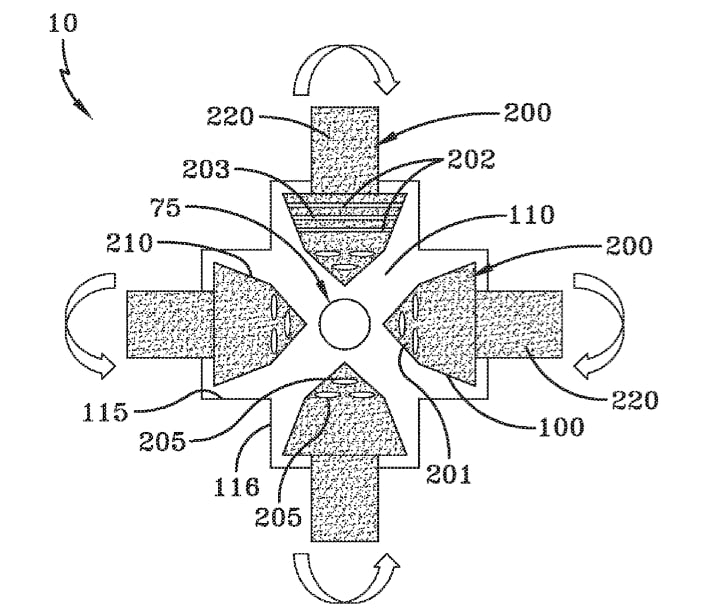Warp Speed Mr Sulu: US Navy Files Patent For Compact Nuclear Fusion Reactor

The problem is that [safely] harnessing nuclear fusion is incredibly more difficult than nuclear fission, and the currentspace requirements are immense. Nuclear fission occurs when isotopes of uranium or plutonium are bombarded with subatomic particles, splitting them apart into smaller nuclei. The energy released by this process is capable of being used for peaceful purposes (i.e. propulsion, residential power) or for wartime efforts (i.e. nuclear weapons).

Nuclear fusion, however, occurs when hydrogen isotopes (namely Deuterium and Tritium) are combined under immense temperature and pressure to give off helium isotopes and neutrons. The resulting reaction also produces an immense amount of power much more efficiently (and cleaner) than nuclear fission.
Nuclear fusion is often seen as the “holy grail” of energy production as it has no carbon emissions, it is an order of magnitude more efficient compared to fossil fuels, and there is less of a threat from disposing of radioactive materials (among other benefits).
While current fusion reactors are vast in size (think roughly the size of a small building), the U.S. Navy has filed a patent for a “compact” fusion reactor that measures between 0.3 to 2 meters in diameter. The patent’s author, Salvatore Cezar Pais, works for the Naval Air Warfare Center (Aircraft Division).
Many of today’s fusion reactors uses toroidial superconducting magnetic coils to contain the plasma core during a fusion reaction. Pais’ design, however, uses several electrically-charged conical dynamic fusors that spin at high speeds to create a “concentrated magnetic flux,” while at the same time filling the chamber with Deuterium gasses to sustain the fusion reaction.
According to the patent [PDF], the reactor could produce anywhere from 1 gigawatt to 1 terawatt of power, while requiring only 1 kilowatt to 1 megawatt of input power. To put that in perspective, according to The WarZone, the most powerful nuclear fission reactor in operation on Earth produces 4 gigawatts.
Understandably, the patent goes on to state that this compact fusion reactor could have multiple uses for power generation on land, sea, and in space. But for the Navy’s purposes, the at-sea application of this technology is abundantly clear as “Deuterium (heavy Hydrogen) can be abundantly extracted from sea-water; hence the ‘virtually limitless’ fuel source idea, that makes this invention extremely beneficial,” reads the patent.
Given that we still have not yet been able to fully harness fusion power for net-positive commercial energy production (even with room-sized contraptions) or for propulsive duties, it remains to be seen if the technology currently exists to produce a compact fusion reactor using Pais’ design is possible. However, it does at least give us a glimpse into the future where clean energy is abundant for Earth’s fast-growing population.
Photo Credit: U.S. Navy photo by Photographer's Mate 3rd Class Douglass M. Pearlman.

